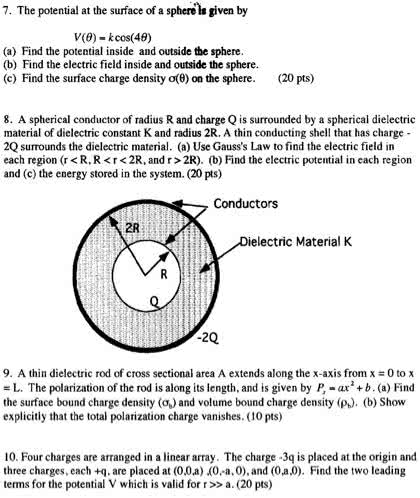PHYS1220 Lecture 6: PHYS1220 Week 3.6
37 views4 pages
10 Oct 2018
School
Department
Course
Professor
Document Summary
Electric potential due to a charged conducting sphere. For r > r0: v = k q/r. For r < r0: v = k q/r0. Single point charge: q at a distance r. An electric potential can be represented graphically by drawing equipotential lines (surfaces in 3d) The potential difference along an equipotential is zero and no work is required to move charges from point to point along the surface. An equipotential surface must be perpendicular to the electric field at any point. The rate of flow through a specified area of an object. Electric flux is the number of field lines going through the surface/volume. If the area is an irregular shape, flux is calculated using the surface integral. If the surface is formed in a closed shape, it is called a gaussian surface. If there is no charge inside a gaussian surface, the electric flux through it adds to zero.
Get access
Grade+20% off
$8 USD/m$10 USD/m
Billed $96 USD annually

Homework Help
Study Guides
Textbook Solutions
Class Notes
Textbook Notes
Booster Class
40 Verified Answers
Class+
$8 USD/m
Billed $96 USD annually

Homework Help
Study Guides
Textbook Solutions
Class Notes
Textbook Notes
Booster Class
30 Verified Answers
